0 Comments
Recently, my husband and I visited the Royal Ontario Museum, commonly known as the ROM, in Toronto, Ontario. The ROM is an amazing place, full of natural specimens and cultural artifacts. You'd need a few weeks to fully explore the entire collection. Because we only had a day, my husband and I decided to focus our attention on the museum's third floor, which features artifacts from many world cultures from prehistory to the 20th Century. As we strolled through the African baskets, eastern Buddhas, Egyptian cat mummies, Grecian pottery and Rococo furniture, I felt inspired and affirmed as an artist. Maybe that's obvious: a trite reaction. But there were two things in particular that I realized in a refreshing and uplifting way.  Greek pottery from the ROM's collection (photo from the ROM). Greek pottery from the ROM's collection (photo from the ROM). The first thing that struck me like a two-by-four was the fact that art, adornment and beauty have been a necessary part of culture from the beginning of time. As an artist/artisan, I sometimes wonder, "What's the point? Nobody really needs the stuff I create." These misgivings were clearly challenged by what I saw at the ROM. Through many ages of history, artists and craftspeople were highly esteemed in all cultures, and their work touched every aspect of life: birth, work, celebration and death. Artistic items like beads and jewelry were sometimes used as currency. Jewelry and decorative, artistic detail in clothing have been part of every world culture as soon as people could work metal and weave fabric. In other words, art has always been integral to life. In fact, without art, the ROM would have very few cultural artifacts, and we would know very little about the people who came before us. The second affirmation I experienced during my visit to the ROM was that upcycling and repurposing are age old practices. People have always used the everyday objects around them to create art, clothing and jewelry. I saw jewelry made from the garbage and trifles of ages past: bone, seed pods, animal teeth, stones, scraps of leather and wood, tiny pieces of shell. Feathers, fur and hair were incorporated into art, masks and even weapons. I think it's only since industrialization that people have had the "luxury" to waste. We can learn a lot from the multitudes who lived before industrialization about finding practical and beautiful uses for scraps and shards. I've always thought of my efforts in upcycling as being mindful of the present and future, but now I see they're also deeply connected to the past.
some of Rembrandt's self-portraits: (l-r) 1629, 1635 (with his wife, Saskia, depicting a scene from the prodigal son parable), 1640, 1661
photos, WebMuseum I was super stoked to find this cool retro kitchen storage unit at my local reuse centre. I walked past it a few times, not really noticing its potential until - BAM! - it hit me: this would be perfect for bead storage in my studio. To be specific, seed beads.
I think this plastic contraption was made probably to be a kitchen cupboard organizer for spices, by a company called Kitchen Art. I'm guessing it was made in the 80's. I have my seed beads organized into bottles by colour, plus some additional tubes full of beads. I stacked my bottles o' beads on the tiers of the kitchen organizer and put the tubes of seed beads into the organizer's handy pull-out drawer. Everything fits perfectly and is within easy reach of where I work. Dreamy bead storage. I love it when I find obscure and handy things like this! This post is part of my series about the artisans whose work you'll find in The Mennonite Central Committee's Ten Thousand Villages shops. You can read my original post introducing the series here. Today, let me introduce you to Phontong Handicrafts, an artisan cooperative in Laos. Phontong Handicrafts gives people living in remote villages the opportunity to earn a living without having to leave their homes for larger cities to seek employment.  Laos is situated in a part of the world that has been turbulent for several decades. And the country itself has not been insulated from turmoil. From the mid 1950's to mid 1970's, Laos was embroiled in civil war, further complicated by the Cold War and the war in neighbouring Vietnam spilling over Laotian borders. A tense stability ensued when a Communist government took power in 1975. By this time, many Laotians had been displaced from their communities to settlements near larger cities, and employment was difficult to find. These circumstances drove a woman named Kommaly Chantavong to action. As a child, Kommaly had fled from northern Laos to the settlement village, Phontong, near the city Vientang. As an adult during the time of transition as the Communist party took power, she and countless others had difficulty finding work. Kommaly knew that, like her, many women displaced from northern Laos had learned traditional weaving techniques from their mothers and grandmothers: these skills could provide a source of income. In 1975, she gathered a group of 10 women, and together they formed "The Phontong Weavers".  photo, Ten Thousand Villages photo, Ten Thousand Villages The women began by selling their creations at a local market. In 1977, their beautiful work caught the government's eye, and The Phontong Weavers were commissioned to weave the ribbons needed for army and police uniforms. The extra business allowed the women to expand their group to be a cooperative representing other villages around Vientang. In 1985, the weavers applied to the government to become a recognized cooperative, registering as "The Phontong Handicraft Cooperative". The government sold raw materials and dyes to Phontong Handicrafts and then purchased the cooperative's products for resale in the government store and export to Eastern Block countries. 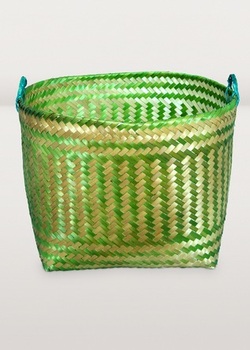 photo, Ten Thousand Villages photo, Ten Thousand Villages It wasn't long before changes in the world would once again result in changes for Laos. With the dissolution of the Soviet Union and the resulting global economic shifts, trade arrangements changed for Laotian cooperatives. The country's Communist government gradually decentralized economic control and encouraged private enterprise, which entailed that cooperatives would oversee their own transactions. As ever, Phontong Handicrafts was proactive, and established trade arrangements with two fair trade NGO's, including Ten Thousand Villages. Today, Phontong Handicrafts represents over 450 artisans in 35 villages, and now includes wood carvers in addition to fabric and basket weavers.  photo, Ten Thousand Villages photo, Ten Thousand Villages What inspires me about this story is that Phontong Handicrafts has survived - and even grown - through times of great change. They approach their business with the dignity they encourage in their artisans. And their role in Laos remains critical. Subsistence agriculture accounts for 80% of the employment in Laos, when only 4% of the country's land is arable. In this precarious economic reality, Phontong Handicrafts promotes some sustainable employment opportunities while fostering longstanding creative traditions. Thanks to them - and Ten Thousand Villages, of course - people around the world can enjoy beautiful art forms that have been taught in Laotian villages for centuries. On Etsy.com, where I have my online shop, I am part of a team of other wonderful creatives who share my passion for upcycling. Each month, Team Upcyclers hosts a challenge: one of the team members chooses an item to upcycle - like wine corks, old sweaters or old neck ties - and the other team members respond by submitting new and innovative ways of reusing and repurposing the challenge item. You can see some of the past challenges by visiting the Team Upcyclers Blog. This month the upcycle challenge was to find a use for old and broken jewelry. This was a timely challenge for me because I recently acquired a few shoe boxes full of old and broken jewelry from my Mom and a couple aunts. I have reused a lot of the jewelry from these generous ladies to make other jewelry, but there are a few odds and ends that I can't use to make jewelry. This month's Team Upcyclers challenge provided the perfect opportunity to come up with some ideas.  One night, I woke up in the middle of the night with an idea of what to do. Why not spruce up an old jewelry box by using old jewelry? It was hard to get back to sleep as I imagined the possibilities. This week, I headed off to a local reuse centre (the Burlington Reuse Centre - bar none, my favourite place to shop), in search of a jewelry box in need of some love. I found this adorable little jewelry box with a drawer. It was pretty dirty and had a few chinks taken out of the finish, so I figured it was a perfect candidate for some upcycled glory. 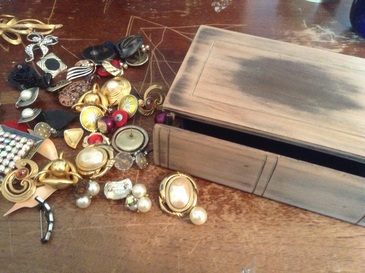 After taking it home and cleaning it, the first thing I did was sand down most of the dark finish to smooth out some of the chinks and scratches. Then, I picked through my stash of 80s earrings, broken brooches and partner-less earrings to see what ensemble would work. The moment I saw this box at the reuse centre, I knew I could use some old earrings as drawer pulls . . . a moment of upcycling destiny, I'd say. I decided to go with a pearl theme. I picked out some post back earrings and a brooch that had fallen apart (on the right in the photo). I also used some earring posts that had lost their dangled attachments. 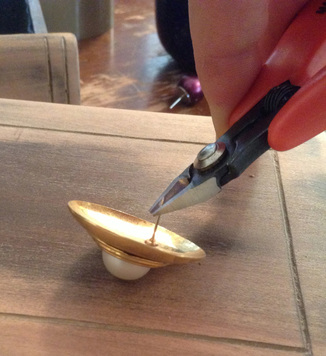 Post back earrings are perfect for this sort of project because the posts can be used as pins for attaching to surfaces. I cut down each post at an angle to create a sharp pinpoint. Then, I arranged all the pieces the way I wanted them. Based on my layout, I drilled tiny holes into the wood, into which I could insert the earrings. Before pinning the earrings into the wood, I added some glue (my beloved Weldbond), just to make sure everything stayed secure. I attached the brooch pieces with glue, tucking them underneath and between the earring pieces. And here's the result! I'm pretty happy with how this little jewelry box turned out, and I think it will make a great addition to the top of my dresser. Thanks to the Team Upcyclers challenge, I got motivated to rethink, and found a new purpose for some long-neglected implements of fashion.
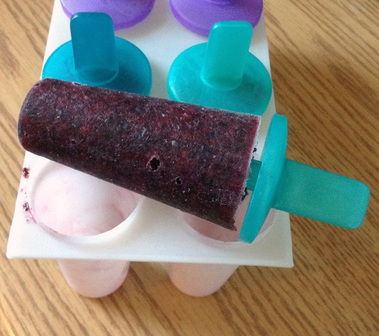 blueberry vodka popsicle . . . mmmmm blueberry vodka popsicle . . . mmmmm A recent garage sale excursion resulted in a nostalgia trip for me when I came across some popsicle molds in mint condition. When I was a kid, homemade popsicles were a summertime staple. For my mom and all my friends' moms, popsicle molds provided a cost effective solution for luring their kids away from the neighbourhood Dickie Dee ice cream bike: just fill up the molds with whatever juice was in the house, and your kids could have a frozen treat on a summer afternoon. I was pretty stoked to find these popsicle molds, and was inspired - on the spot - to revive the summertime staple of my youth. I've been trying to make more of my own snacks lately, in an effort to eat healthier and have more control of what goes into my body. And well, it also saves money, so that's nice too. So the prospect of frozen snacks had me a little giddy. 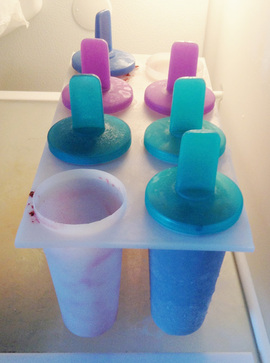 frozen blueberry vodka deliciousness frozen blueberry vodka deliciousness As soon as I got home, I started scouring Pinterest and was amazed to find hundreds of wonderful ideas and recipes for homemade popsicles. And they're miles beyond the OJ and Kool-Aid popsicles of yesteryear. There are all sorts of concoctions with fresh fruit, yogourt, pudding, ice cream, and alcohol. I thought I'd start with alcohol. And not necessarily because I'm a lush. Of course, the concept of a frozen cocktail is extremely appealing, but the best thing about putting alcohol in a popsicle is that alcohol improves the consistency of the popsicle. Alcohol has a lower freezing point than water, so a popsicle made with alcohol is much easier to eat because it's not a solid block of ice. Of course, it also tastes amazing. My first "poptail" attempt was these Blueberry Vodka Popsicles because they seemed super easy, with only four ingredients: blueberries, simple syrup (sugar and water), lemon juice and vodka. They were very easy to make, and even easier to eat . . . yum! This recipe will fill two eight-popsicle molds like mine, as pictured. The recipe calls for fresh blueberries, but I used frozen blueberries, and that worked well. As you can see from the photo, my husband and I have already dug in, and I'm sure the popsicle mold will be ready for refill in no time. If you want to look for popsicle recipes with alcohol, you can search a number of terms: "poptails", "spiked popsicles" or "alcohol popsicles" will bring lots of results: everything from mojitos to margaritas to mudslides can be found in popsicle form! 6/12/2013 More Garden Container Ideas to Save You Money and Make a Uniquely Beautiful Patio GardenRead NowIn my last post, I introduced some ideas for turning household items into garden containers. In a similar vein, I'll show you some ideas in this post for repurposing second hand finds as plant pots. For a reminder about what you should look for in a garden container, read my previous post about repurposed garden containers. Where to Find Garden Containers: The Antique Store Antique markets and shops provide lots of interesting options for garden containers, often at a reasonable price. When you search antique stores, give yourself lots of time so your imagination has ample time to wander (and so you can hunt for a good bargain). 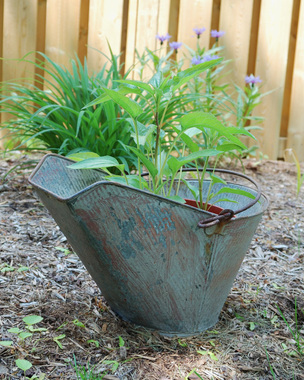 This is an old coal bucket in which I've set a plastic plant pot full of purple coneflower (echinacea). I didn't actually find this at an antique store: it was sitting in a corner of our garage when we moved into our house . . . another treasure left behind by the previous owners. But I have seen many of these at antique stores, usually at a decent price. This container has ample room for a good sized plant. And I love the visual interest that the shape of the coal bucket adds to the garden. Here's an antique store find that I got for $8: an old sap bucket, once hung on a maple tree to collect sap for making maple syrup. It's nice and deep, and of course more than able to stand up to the elements. Because it's such a deep container, I have used it to house a tall perennial, false sunflower, which gets lovely yellow flowers later in the summer. The yellow flowers will look gorgeous with this blue container, and I love it that I have something so iconically Canadian in my garden. Where to Find Garden Containers: Second Hand Stores and Garage Sales You can often find used flower pots, window boxes and garden containers at second hand stores and garage sales. But if selection is scarce for traditional garden containers, look for something out of the ordinary or eclectic: buckets, colanders, stock pots, camping dishes, crockery . . . heck, even an old wagon would be a great thing for vessel for potted plants. 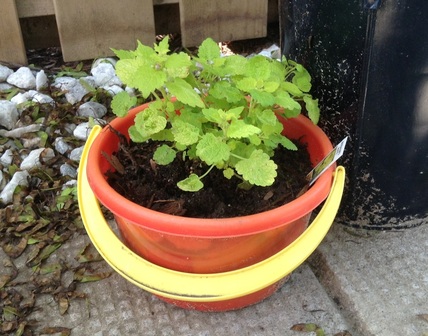 I found this cute sandbox/beach bucket at a second hand store and knew right away it would be a perfect plant pot. I poked some holes in the bottom of the pail and planted some golden spotted lamium in it. I'm pretty stoked about how amazing this lime green lamium looks in the orange and yellow pail. The vibrant colours some playfulness to the patio. These ideas just scratch the surface of what you can use to pot up your plants. Let yourself explore, and I know you'll enjoy the surprising and eclectic results.
 photo, landscapingnetwork.com photo, landscapingnetwork.com A few weeks ago, I wrote about my plans to grow some perennials in pots in the areas of my yard where it's difficult to plant anything. I haven't spent a cent yet on the plants for my potted perennial plans: so far I've been able to use divided plants and seedlings from my own garden and those of my friends. The trickier - and potentially more costly - part of this plan is finding the containers themselves. Containers and planters from garden centres and home stores are beautiful, but they can be pricy (and heavy!). So, I've had to come up with some free and low cost solutions to work within my budget. And really, I'm happy to do it. My perennial pots might not be super cohesive or colour coordinated, but they'll have lots of character. In my next two blog posts, I'll fill you in on some ideas I'm trying that might also work in your garden. What to Look for in a Garden Container There are three main qualities to consider when looking for a container for potting perennials:
Where to Find Garden Containers: Around the House and Garage Your kitchen, basement and garage are excellent sources for garden containers. You might have some old pots and pans in the back corners of your kitchen cupboards or some wicker baskets in the basement. In the garage, you might have an old watering can, an old bucket, or even and old wheelbarrow. Just use your imagination. 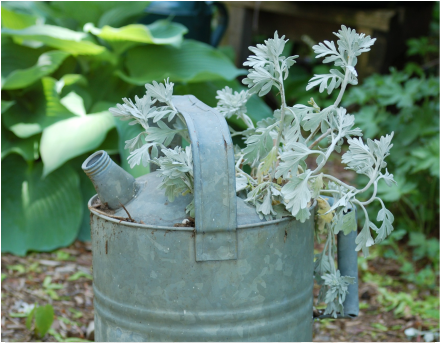 This old steel watering can was left in our garage by the previous owners of our home. And I very much appreciate that they did. I used the watering can for a couple years until it leaked more than it poured. It has a small opening, but it makes a lovely garden container for traily plants that can cascade over the sides of the container. And it's nice and deep for all those roots. This week, I divided some silver brocade artemisia (sweet wormwood) from my front garden and put some of it in this old watering can in my backyard garden. 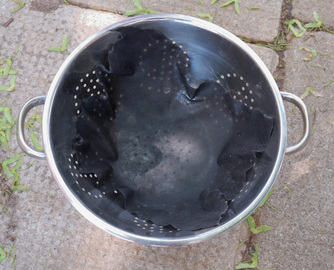 Here's another idea you might have come across on Pinterest or Flickr - as I did: a colander makes a perfect planter because it definitely has ample drainage. And it's cute too. This metal colander doesn't come from my own kitchen, but I got it at a garage sale down the street for a quarter! I lined it with a piece of landscaping fabric, just to prevent any soil from draining out. I transplanted some lamium (deadnettle), which is a beautiful ground cover plant, so I thought it would do well in this wide container. Et voila! I really love how it looks staggered with other planters on my patio. (Now if I could only stop our maple tree from dumping so many maple keys all over everything.) In my next post, I'll give you some ideas for second hand finds that you can turn into garden containers. 5/17/2013 Women in Rural Bangladesh Find Fair and Sustainable Employment Through CORR - The Jute WorksRead NowThis post is part of my series about the artisans whose work you'll find in The Mennonite Central Committee's Ten Thousand Villages shops. You can read my original post introducing the series here. Today, let me tell you about CORR - The Jute Works from Bangladesh. If you type "Bangladesh" into Google news search right now, most of the stories that come up are about the April 24th collapse of a building that housed several garment factories in a suburb of Dhaka, the capital. Over 1,100 people died in the accident. This tragedy occurred only five months after a fire in another Bangladesh garment factory killed 112 workers. Any catastrophe that involves losses of life and injuries is a tragedy: what's unspeakably awful about these tragedies is that they wouldn't have occurred if the international clothing brands who operate the factories would have properly maintained the facilities. 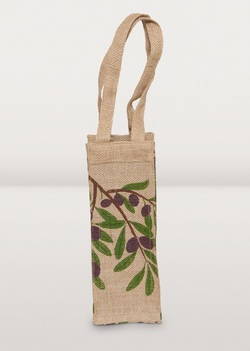 Jute Bag Made in Bangladesh by a CBJ artisan Jute Bag Made in Bangladesh by a CBJ artisan Of the limited amount of information I know about the economics of the clothing industry, I have heard the argument that improving the wages and conditions for workers in factories like these tragedy-stricken ones in Bangladesh, would upset local economies where the factories exist. I've always suspected that this is an over-simplification (and at worst, a cop-out), and my recent discovery of CORR artisans at Ten Thousand Villages proves my suspicions aren't too far off. CORR - The Jute Works (CJW) describes itself as a women's non-profit handicraft marketing and exporting trust. It was founded to help impoverished rural women in Bangladesh find means to earn a living using local materials they can easily access, like grass, bamboo and clay. Partnering with CJW means women don't have to leave their families to earn income: they can work from home and still raise their children and be part of their communities. 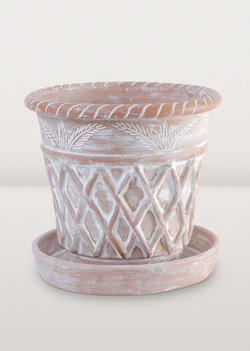 terra cotta garden planter by CBJ artisan terra cotta garden planter by CBJ artisan The artisans are organized into self-governed cooperative groups, and CJW's Education Team provides assistance as needed. Currently, CJW has 220 cooperative groups representing over 4,800 female and 160 male artisans across Bangladesh. That's a lot of people. The artisans make everything from clay and terracotta pottery to jute bags and baskets to handmade paper. CJW looks after exporting the products and also provides funding and support for further education and business ventures for the artisans. This is great news about Bangladesh, and I wish it was a top story. It's hard to be an informed and responsible consumer. Labels don't tell us much, and it's hard to know which corporate responsibility statements to believe. One sure way to buy responsibly is to purchase from organizations such as CJW, who try to nourish sustainable and just employment in their corners of the world. It might seem like a drop in the bucket, but it's something. * all photos courtesy Ten Thousand Villages - click on the images to purchase directly |
Details
Jane Hogeterp Koopman
Subscribe to Jane's Blog by RSS or email:
Categories
All
Archives
January 2018
Stuff I love:
|
Proudly powered by Weebly

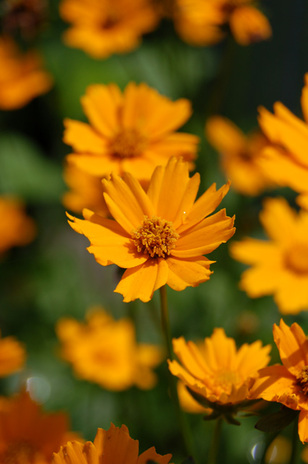









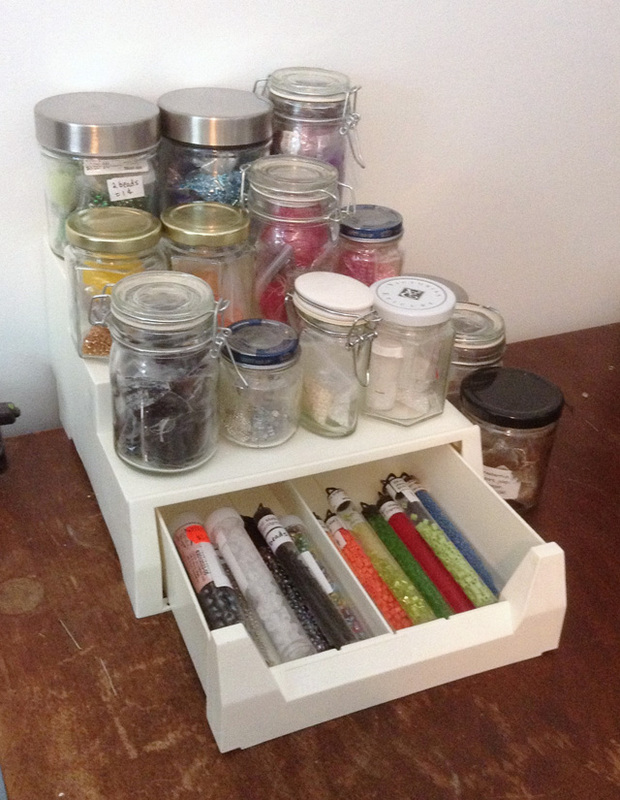
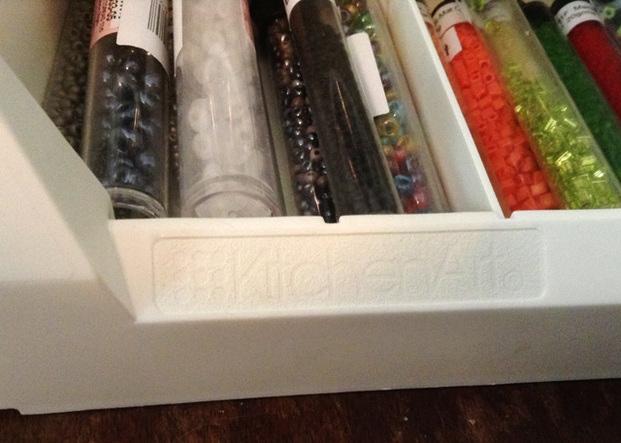
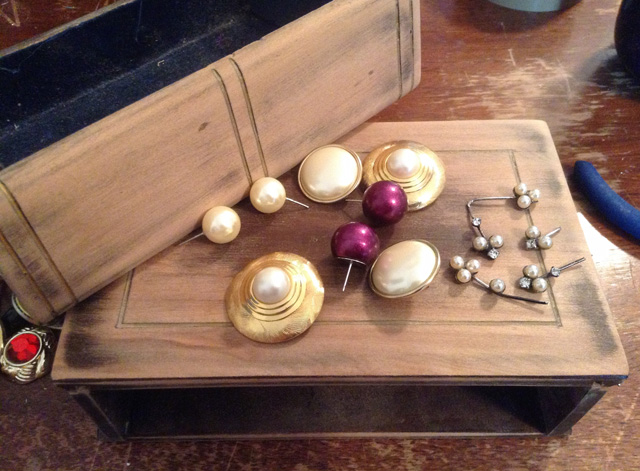
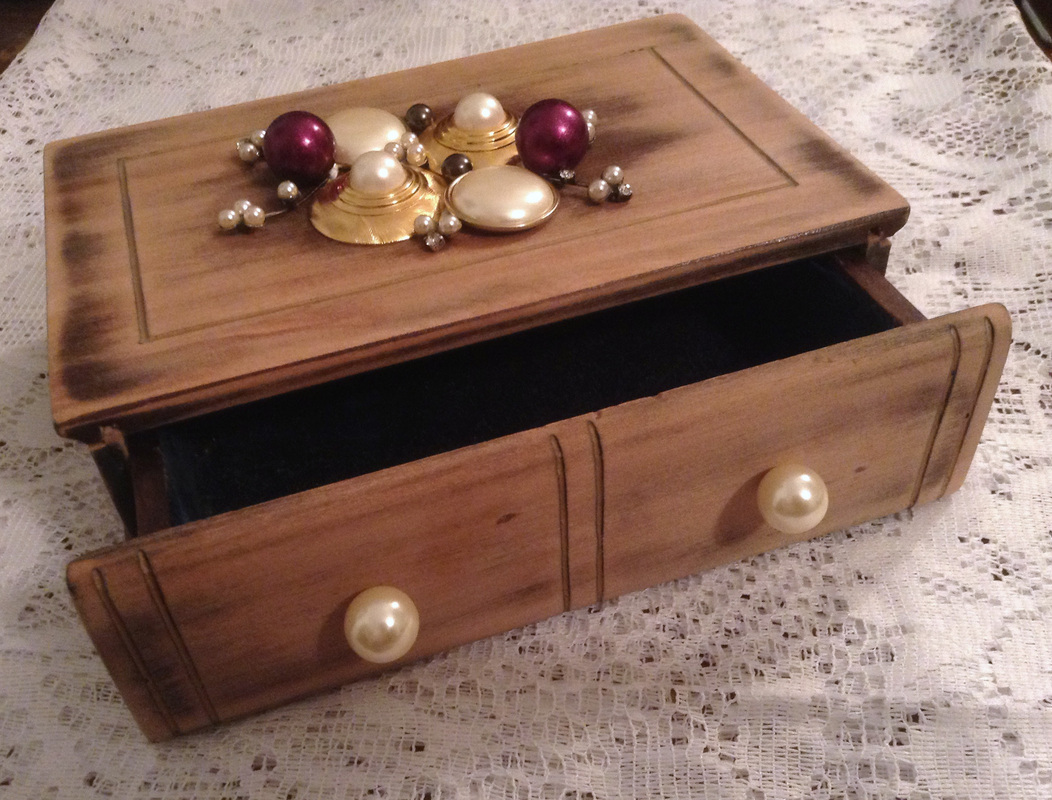
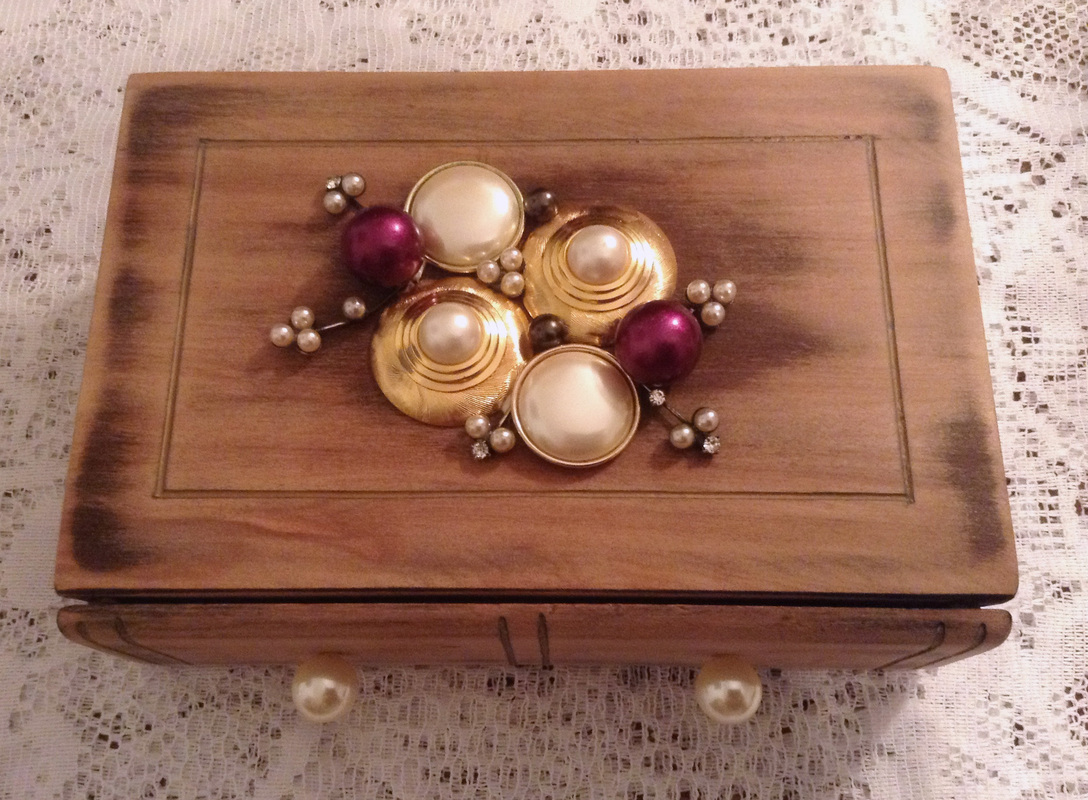
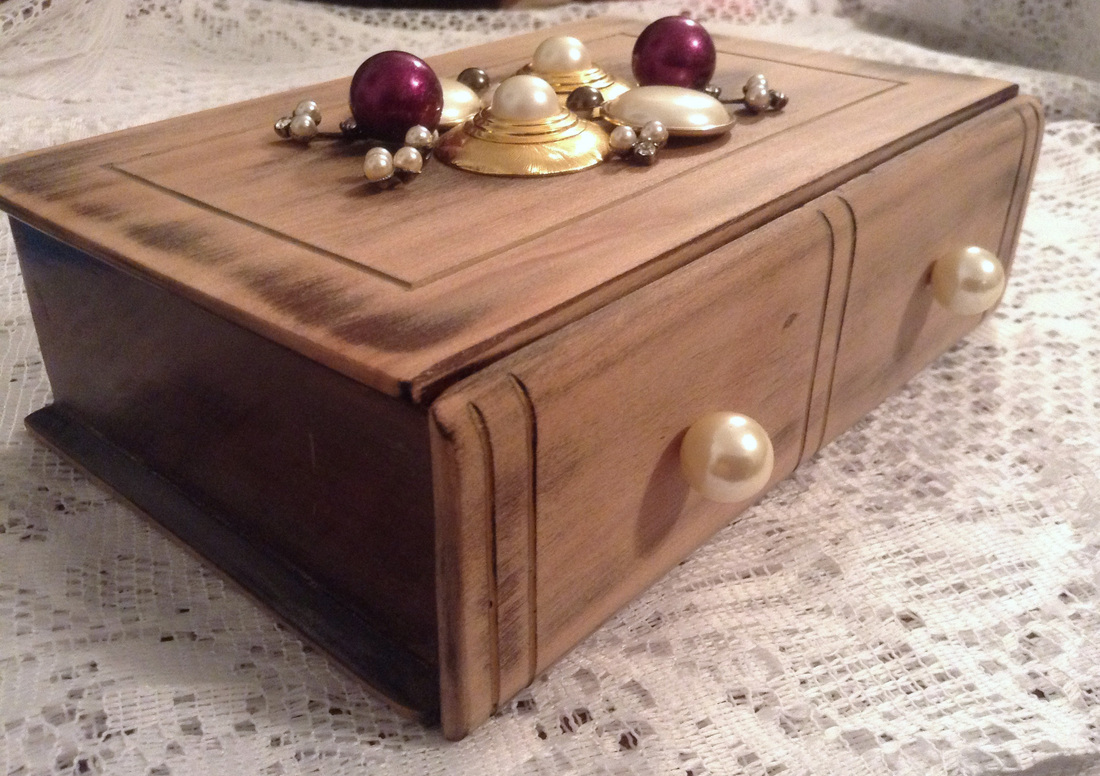
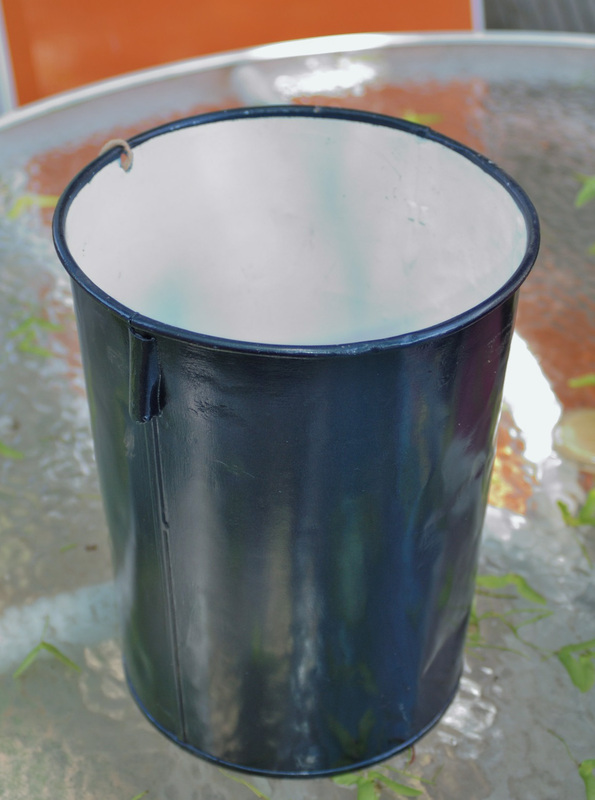
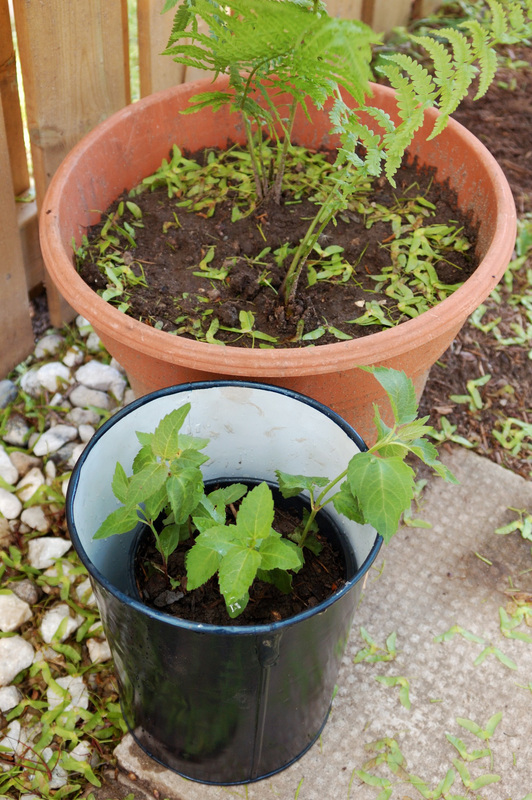
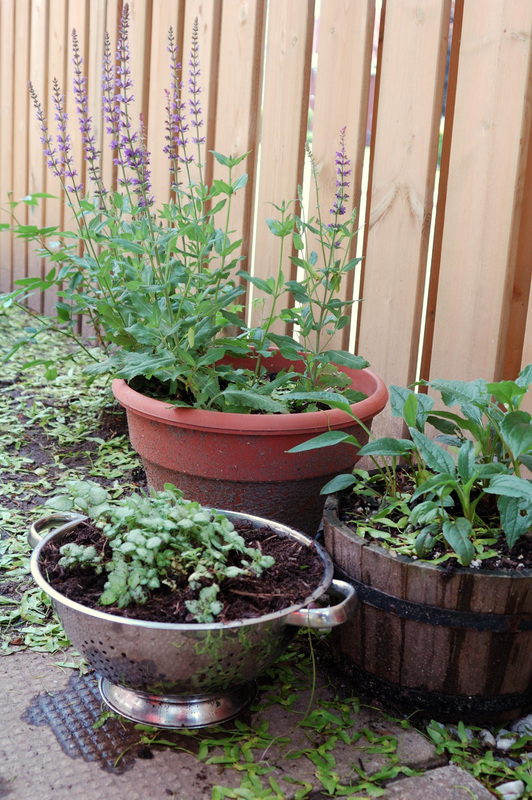
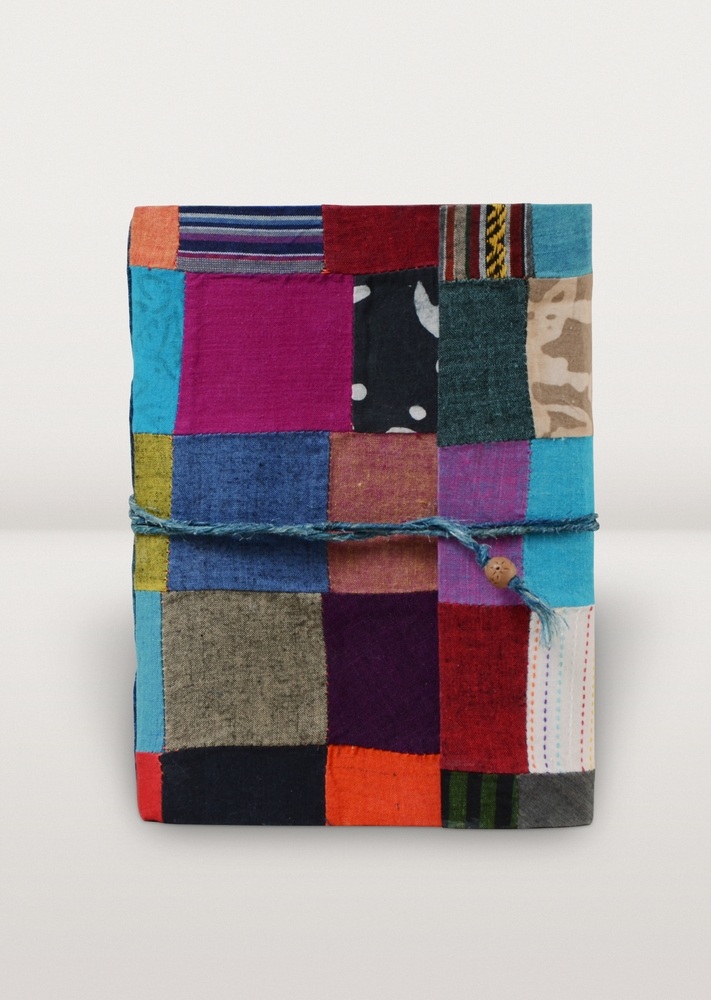
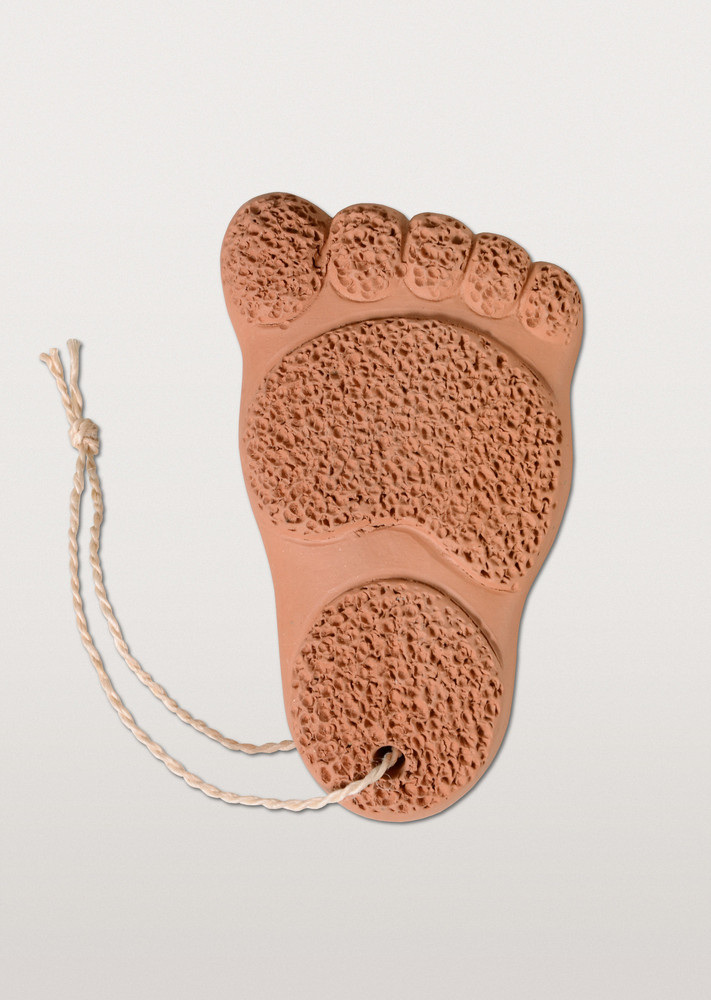
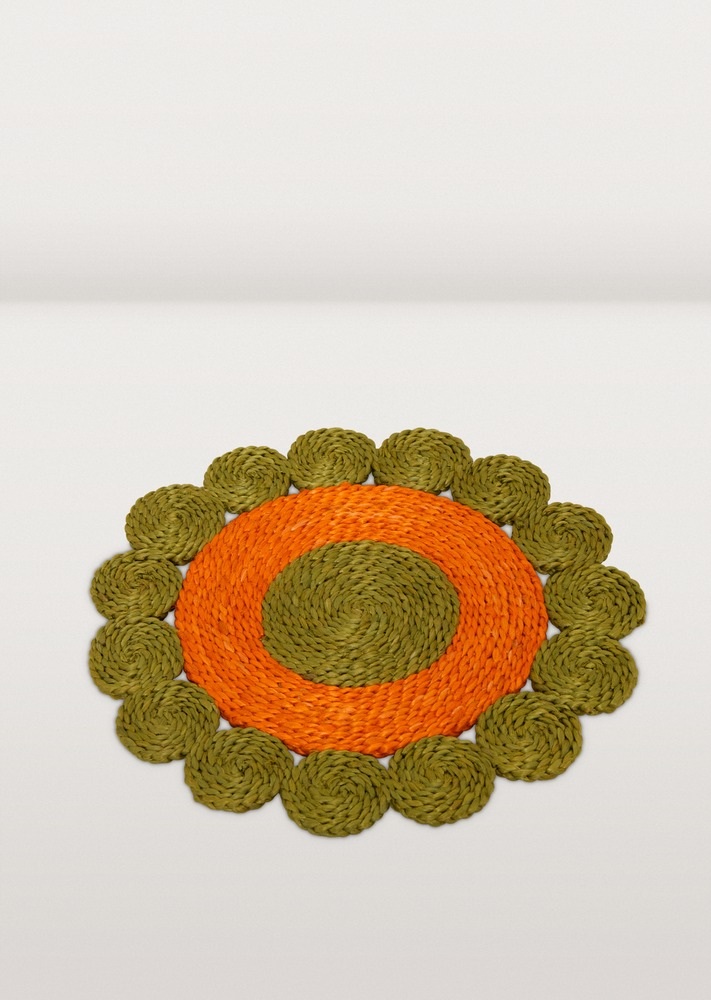

 RSS Feed
RSS Feed